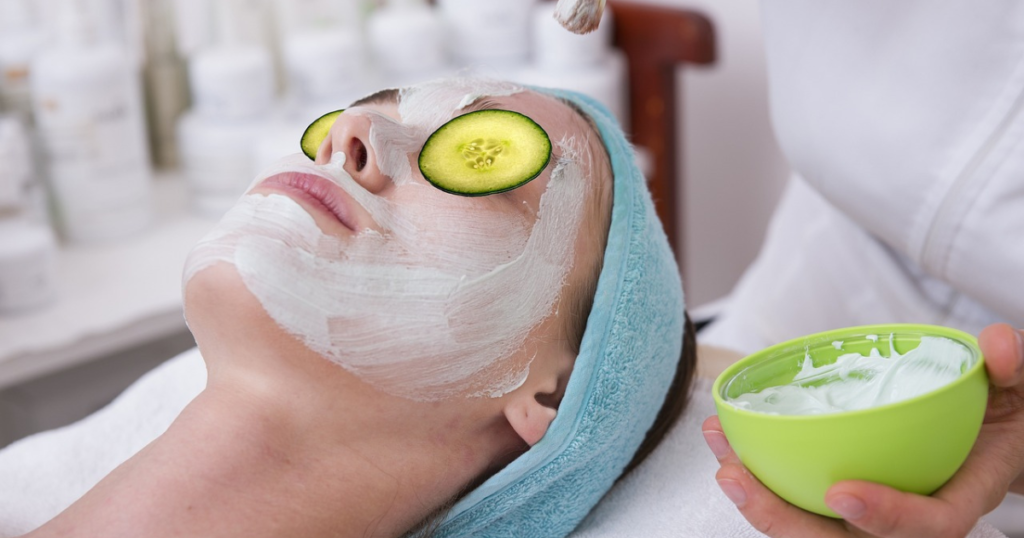What is exfoliating
Exfoliating is the process of removing dead skin cells from the surface of the skin. It’s an essential part of any skincare routine because it helps to unclog pores, prevent acne, promote skin cell turnover, and improve the overall texture and appearance of the skin.
Types of exfoliating
- Physical exfoliating 2. Chemical exfoliating 3. Exfoliating mask
Physical exfoliating
Physical exfoliation is a skincare method that involves manually scrubbing away dead skin cells from the surface of the skin using abrasive particles or tools. This process helps to unclog pores, smooth the skin’s texture, and promote a brighter complexion. Physical exfoliation is suitable for most skin types, but it’s important to choose gentle products and techniques to avoid irritation or damage to the skin.
1.Scrubs: typically contain small particles such as sugar, salt, coffee grounds, or ground nuts that act as abrasives to buff away dead skin cells when massaged onto the skin. These particles work to physically dislodge and lift away the buildup of dead skin cells, revealing fresh, radiant skin underneath. Sugar and salt scrubs are popular choices for their natural exfoliating properties, while coffee grounds are known for their stimulating effects on circulation.
2.Brushes or Tools: manual tools such as brushes, loofahs, or exfoliating gloves can also be used for physical exfoliation.
These tools provide added exfoliation benefits by increasing blood flow to the skin’s surface and helping to remove dead skin cells more effectively. They are particularly useful for areas of the body that may be harder to reach or require more intense exfoliation, such as the elbows, knees, and feet.
3.Microdermabrasion: This is a more intensive physical exfoliation method often performed by professionals. It uses a machine to spray fine crystals onto the skin’s surface, removing dead skin cells and stimulating collagen production.
How many days a week and effect of Physical exfoliating
While physical exfoliation can provide immediate results in terms of smoother, softer skin, it’s essential to use caution to avoid over-exfoliating. Too much scrubbing or using abrasive products with large, jagged particles can cause micro-tears in the skin and lead to irritation, redness, and inflammation. It’s best to choose gentle exfoliants and use them no more than 1-3 times per week, depending on your skin’s sensitivity and tolerance.
Overall, physical exfoliation can be an effective way to improve the appearance and health of your skin when done properly. By incorporating gentle exfoliation into your skincare routine, you can achieve a brighter, more radiant complexion and maintain smoother, softer skin over time.
Chemical Exfoliating
Chemical exfoliation is a skincare method that involves using chemical substances, such as acids or enzymes, to remove dead skin cells from the surface of the skin.
Unlike physical exfoliation, which relies on abrasive particles or tools to manually scrub away dead skin cells, chemical exfoliants work by dissolving the bonds that hold dead skin cells together, allowing them to be shed more easily. Chemical exfoliation can help to improve skin texture, reduce the appearance of fine lines and wrinkles, unclog pores, and promote a brighter, more even complexion.
There are several types of chemical exfoliants commonly used in skincare:
1. Alpha Hydroxy Acids (AHAs): AHAs are water-soluble acids derived from fruits, milk, or sugar cane.
Examples include glycolic acid (derived from sugar cane), lactic acid (derived from milk), and mandelic acid (derived from almonds). AHAs work by exfoliating the surface of the skin, promoting cell turnover, and stimulating collagen production. They are particularly effective for improving the appearance of sun-damaged skin, fine lines, and uneven skin tone
2. Beta Hydroxy Acids (BHAs): BHAs are oil-soluble acids, with salicylic acid being the most common example. like AHAs, which primarily exfoliate the surface of the skin, BHAs can penetrate deep into the pores, making them effective for treating acne-prone and oily skin. Salicylic acid helps to unclog pores, reduce inflammation, and prevent acne breakouts.
3. Enzymes: Enzymatic exfoliants are derived from natural sources such as fruits (e.g., papaya, pineapple) or plants. These enzymes work by breaking down the protein bonds that hold dead skin cells together, gently dissolving them without the need for scrubbing. Enzyme exfoliation is often gentler than acid-based exfoliation, making it suitable for sensitive skin types.
Chemical exfoliants come in various forms, including toners, serums, masks, and peels. They can be incorporated into your skincare routine at different frequencies depending on your skin type and the concentration of the exfoliant. It’s essential to start with lower concentrations and gradually increase as tolerated to minimize the risk of irritation or sensitivity. Additionally, always remember to wear sunscreen during the day, especially when using chemical exfoliants, as they can increase the skin’s sensitivity to sunlight.
3. Exfoliating mask
Many masks also contain hydrating, soothing, and nourishing ingredients to help replenish the skin and minimize any potential irritation. Common ingredients found in exfoliating masks include hyaluronic acid, aloe vera, antioxidants, and botanical extracts.
To use an exfoliating mask, apply a generous layer to clean, dry skin, avoiding the delicate eye area. Leave the mask on for the recommended time (typically 5-15 minutes), allowing the exfoliating ingredients to work their magic. Then, gently rinse off the mask with lukewarm water and pat your skin dry. Follow up with your regular skincare routine, including moisturizer and sunscreen.
Exfoliating masks can be incorporated into your skincare routine 1-2 times per week, depending on your skin type and sensitivity. They provide a convenient way to achieve a deeper exfoliation and promote healthy, glowing skin from the comfort of your own home.


